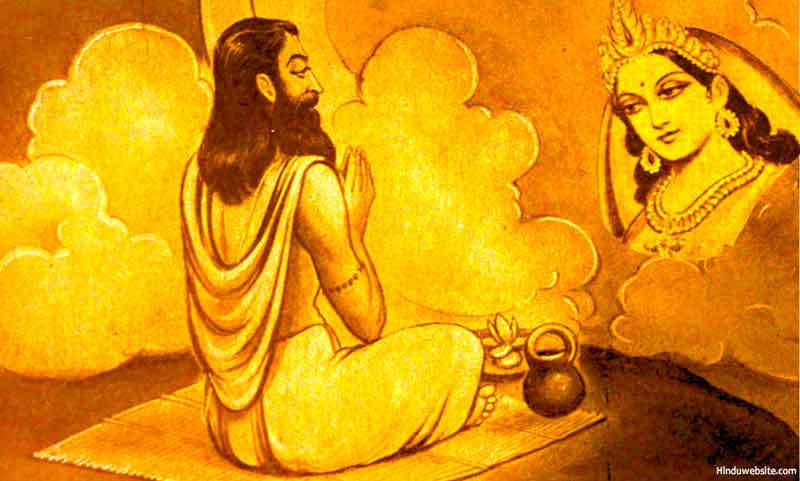
Vasudeva Upanishad

|| Advaya Taraka|| The Atharvasikha|| The Atharvasiras|| Brihad Jabala|| The Importance of Breath in Yoga Practice || Morals From the s || Dakshinamurthy || Untitled 2 || Hayagriva || Jabala Darsana|| Jabali || Krishna|| Kshurika || Mahavakya|| Narayana || Nrisimha Poorva and Uttara Tapaniya|| The Paingala|| Pancha Brahma || Pasupata Brahmana|| The Pranagnihotra|| Rama Rahasya|| Rama Poorva and Uttara Tapaniya|| Sarabha|| Trisikhi Brahmana || Vasudeva|| Yoga Chudamani || Yoga Sikha ||
Introduction by Jayaram V
The Vasudeva Upanishad is a Vaishnava Upanishad and belongs to the Sama-Veda. It deals with Urdhva Pundra or the religious marks of Vaishnavas. Presented in the form of a conversation between sage Narada and Lord Vishnu, it explains how to apply the marks on the body by different categories of people along with the symbolic significance associated with the marks. According to Hindu tradition, wearing sacred marks on the body denotes their social, religious, caste and spiritual status. Both Saivas and Vaishnavas have their own religious marks and each claim their superiority. The following is an original translation of the Upanishad by P.R. Ramachander. Hope it will help you to understand the meaning and significance of the Vasudeva Upanishad and Urdhva Pundra, the religious marks of Vaishnavas.
Translation
Aum ! Let my limbs and speech, Prana, eyes, ears, vitality
And all the senses grow in strength.
All existence is the Brahman of the Upanishads.
May I never deny Brahman, nor Brahman deny me.
Let there be no denial at all:
Let there be no denial at least from me.
May the virtues that are proclaimed in the Upanishads be in
me,
Who am devoted to the Atman; may they reside in me.
Aum ! Let there be Peace in me !
Let there be Peace in my environment !
Let there be Peace in the forces that act on me !
1 Aum. The God like sage Narada saluted Lord Vasudeva and requested him, “Oh God, please teach me the rules of Urdhva Pundra (the religious mark of Vaishnavas which is vertical and points upward)”.
2 God Vasudeva addressing him told as follows:
The Brahmachari (unmarried student of Vedas) and Grahastha
(householder) after reciting the following prayer: “Oh God who
holds the wheel, mace and conch, Oh Achyutha who is staying
in Dwaraka, Oh Govinda, Oh Lotus eyed one,
please protect me, who has surrendered to you.” should apply
Urdhva Pundra in his forehead and other 12 places with his pure
finger (finger next to the little finger) reciting either the
Vishnu Gayathri or the 12 names of the Lord viz., Kesava, Narayana,
Madhava, Govinda, Vishnu, Madhusudana, Trivikrama, Vamana, Sreedhara,
Hrishikesa, Padmanabha and Damodhara.
3 The Sanyasi should wear the Urdhva Pundra with his fourth finger on the head, forehead and chest chanting the Pranava (Aum).
4 Brahma, Vishnu and Shiva are three in number: Sthoola (macro), Sookshma (micro) and Karana (cause); are three worlds above: Bhoo, Bhuva and Suva; are three Vedas: Rig, Yajur and Sama; are three states: waking up, dream and sleep. The Urdhva Pundras are three viz., Aa, Uu and Ma. These Urdhva Pundras are full of Pranava and full of the letter Aum. That one pranava has only become any. The Lord of the ‘Aum’ takes you above. So you have to wear Urdhva Pundra.
5 That sage who wears four things upward viz., stick, bravery, yoga and Urdhva Pundra would reach the high status of salvation. This stable knowledge would reach me naturally through devotion.
Aum ! Let my limbs and speech, Prana, eyes, ears, vitality
And all the senses grow in strength.
All existence is the Brahman of the Upanishads.
May I never deny Brahman, nor Brahman deny me.
Let there be no denial at all:
Let there be no denial at least from me.
May the virtues that are proclaimed in the Upanishads be in
me,
Who am devoted to the Atman; may they reside in me.
Aum ! Let there be Peace in me !
Let there be Peace in my environment !
Let there be Peace in the forces that act on me !
Here ends the Vasudevopanishad, included in the Sama-Veda.
Suggestions for Further Reading
- The Wisdom of the Upanishads, Main Page
- Upanishad Miscellany
- The Brihadaranyaka Upanishad - Translation by Jayaram V
- Symbolism Miscellany
- The Upanishads Translated by Max Muller
- Brahman, The Highest God Of Hinduism
- Atman, Soul or the Eternal Self
- List of 108 Upanishads According To The Muktikopanishad
- Translation Of Various Upanishads
- Introduction to the Upanishads of Hinduism
- Essays on The Upanishads
- Translations of Upanishads - Links
- Essays On Dharma
- Esoteric Mystic Hinduism
- Introduction to Hinduism
- Hindu Way of Life
- Essays On Karma
- Hindu Rites and Rituals
- The Origin of The Sanskrit Language
- Symbolism in Hinduism
- Essays on The Upanishads
- Concepts of Hinduism
- Essays on Atman
- Hindu Festivals
- Spiritual Practice
- Right Living
- Yoga of Sorrow
- Happiness
- Mental Health
- Concepts of Buddhism
- General Essays